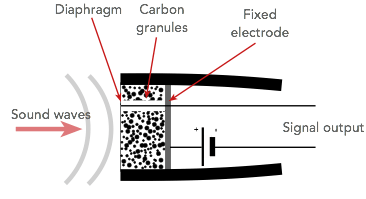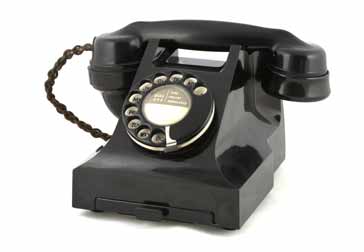Carbon Microphone
The carbon microphone was widely used for many years being one of the earliest reliable microphones.
Microphone Tutorial Includes:
Microphone basics
Microphone types
Microphone specs
Microphone directionality
Dynamic microphone
Condenser microphone
Electret microphone
Ribbon microphone
Crystal / ceramic microphone
Boundary / PZM microphone
Carbon microphone
How to buy best microphone
Microphones for video
Microphones for vocals/ singing
The carbon microphone is not widely used these days, but it has been included here, more for the sake of interest and completeness.
The carbon microphone was developed in the 1870s by Englishman David Edward Hughes. It was the first reliable form of microphone and it was widely used for many years before being supplanted by other types that gave much higher levels of performance.
Carbon microphone basics
The basic concept behind the carbon microphone is the fact that when carbon granules are compressed their resistance decreases. This occurs because the granules come into better contact with each other when they are pushed together by the higher pressure.
The carbon microphone comprises carbon granules that are contained within a small contained that is covered with a thin metal diaphragm. A battery is also required to cause a current to flow through the microphone.
When sound waves strike the carbon microphone diaphragm it vibrates, exerting a varying pressure onto the carbon. These varying pressure levels are translated into varying levels of resistance, which in turn vary the current passing through the microphone.

The varying current can be passed through a transformer or a capacitor to enable it to be used within a telephone, or by some form of amplifier.
The frequency response of the carbon microphone, however, is limited to a narrow range, and the device produces significant electrical noise. Often the microphone would produce a form of crackling noise which could be eliminated by shaking it or giving it a small sharp knock. This would shake the carbon granules and enable them to produce a more steady current.
Carbon microphone applications
Carbon microphones were an ideal choice of microphone in the early days of the telephone. They were widely used in telephone applications because they gave a high output which meant no amplification was used.

As radio started to be used, the carbon microphone was initially used there as well – for broadcasting as well as communications purposes. However their use in broadcast applications soon came to end because of the drawbacks of noise and poor frequency response. Other types of microphone started to become available and their use was preferred because of the better fidelity that was available. The use of the carbon microphone persisted for many years for communications purposes as they gave a high output and they were robust. The poor frequency response was not an issue.
The carbon microphone was used for telephones up until the 1970s and 1980s, but even there it became possible to use other types of microphone more conveniently. Also the crackle and noise of the carbon microphone had always been an issue and when other types of microphone became available at a low cost they started t be used, despite the requirement for additional electronics needed.
Carbon microphones are now only used in a very few applications – typically only specialist applications. They are able to withstand high voltage spikes and this property lends itself to use in a small number of applications.
Carbon microphone advantages & disadvantages
As with any form of microphone there are advantages and disadvantages.
Carbon microphone advantages
- High output
- Simple principle & construction
- Cheap and simple to manufacture
Carbon microphone disadvantages
- Very noisy - high background noise and on occasions it would crackle
- Poor frequency response
- Requires battery or other supply for operation
The carbon microphone has a number of advantages, but today the disadvantages normally outweigh the positives and as a result they are rearely used..
 Written by Ian Poole .
Written by Ian Poole .
Experienced electronics engineer and author.
More Audio Video Topics:
HDMI
SCART
DisplayPort
DVI
Loudspeaker technology
Headphones & earphones
Bluetooth speakers
Stereo sound
Microphones
Audio compact cassettes
Vinyl record technology
Digital radio
DVB television
Return to Audio / Video menu . . .




